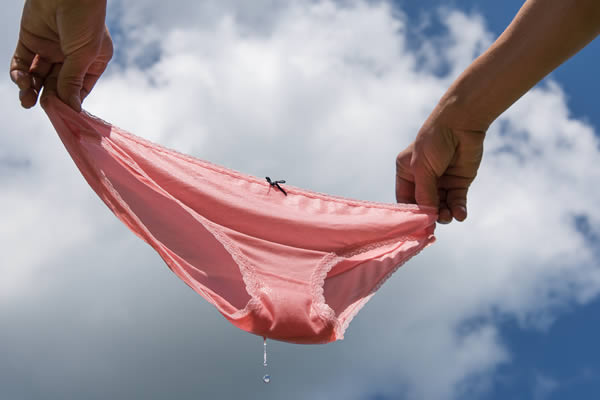
The latest literature review conducted by Mazur-Bialy et al. (2020) shows the most modern methods of pelvic floor physical therapy that can help with urinary incontinence.
Here at Femina PT, we pride ourselves in keeping up with the current best practices and latest techniques. Here’s a breakdown of the latest techniques and how we utilize them at the clinic.
What is urinary incontinence?
Urinary incontinence refers to the involuntary loss of urine, which can range from a few drops (also called light bladder leakage) to complete loss that wets the floor. There is actually more than one kind of urinary incontinence: the two most common types of urinary incontinence that affect women are stress incontinence and urge incontinence (also called overactive bladder, or OAB).
- Stress Incontinence: urine leaking with physical activity- sneezing, coughing, laughing, lifting, pushing/pulling, jumping.
- Urge Incontinence: urine leakage that is coupled with urgency to go- leaking while you’re in line for the toilet, leaking/urgency when you’re parking your car in the driveway, putting the key in the door, fumbling with your pants, etc.
- Mixed UI: a combination of stress and urge symptoms
Pelvic Floor Physical Therapy and the Management of Urinary Incontinence: Current Best Practices
Pelvic Floor Muscle Training
Pelvic floor muscle training (PFMT) can help increase pelvic support and increase the function of the urethral sphincter, which is the little muscle that helps you stay leak free. Pelvic floor muscle training can be performed to increase strength, endurance, and muscle coordination.
Studies estimate that 30%–40% of women are unable to perform a pelvic floor muscle (PFM) contraction, or Kegel, correctly with verbal instruction alone. The correct voluntary PFM contraction despite the instruction and in the population of women with pelvic floor dysfunction, the rate is as high as 70% (Talasz, 2008; Tibaek, 2014).
At Femina PT, our therapists are experts in teaching a correct pelvic floor contraction and how to increase strength in a safe and effective way.
Manual Therapy
Pelvic Floor Dysfunction (PFD) can result in muscles that are too tight and weak, or with low tone and weak. Manual therapy techniques performed by a trained pelvic floor therapist can help treat the muscles and fascia that may be contributing to the pelvic floor dysfunction. Additionally, the fascia inside the pelvis is continuous with the fascia that lines the organs and the abdomen, diaphragm, area between the vaginal canal and the rectum, and the fascia of adductors. Manual therapy and fascial release of these areas can help the other areas as any disorders in hip, core muscles may affect the pelvic floor and vice versa. Additionally, it has been found that massage of the abdominal muscles and the muscles surrounding the bladder may improve bladder function (Mazur-Bialy, 2020). The therapists at Femina PT are trained in manual therapy techniques such as trigger points release, myofascial release, and visceral massage- techniques which may reduce urinary incontinence symptoms and pelvic pain.
Electrical Stimulation
Electrical stimulation is one of the most commonly used therapeutic methods in the treatment of urinary incontinence (Mazur-Bialy, 2020). Electrical stimulation is a noninvasive, passive treatment that induces muscle contraction in a muscle. In regards to the pelvic floor, electrical stimulation can be combined with pelvic floor physical therapy, which can further help the treatment of urinary and also fecal incontinence. At Femina, we have access to the Attain line of biofeedback and electrical stimulation products to help you gain control of your continence.
Other Interventions
Mazur-Bialy (2020) outline two other interventions that are helpful in the treatment of urinary incontinence: magnetic stimulation and whole-body vibration training.
What does pelvic floor therapy at Femina PT look like?
In addition to the methods described above, the treatment modalities you will receive in pelvic floor physical therapy depend on your body and the issues present.
Some of the modalities used at Femina Physical Therapy for the treatment of urinary incontinence can include (but are not limited to):
- Bladder and bowel habits including lifestyle modifications like optimal fluid intake and constipation management
- Therapeutic exercise to strengthen the pelvic floor
- Biofeedback training with intravaginal sensors
- Electrical stimulation
- Manual therapy to treat connective tissue dysfunction and myofascial trigger points
- Visceral mobilization (gentle massage techniques that loosen internal adhesions and restore movement to the organs including the intestine, bladder, uterus, and ovaries) to reduce intra-abdominal pressure, improve motility, and organ function
- Internal pelvic manual therapy to treat sensitive tissues, muscle spasms, trigger points, and muscle guarding that can contribute to urgency, frequency, and leakage
- Training in self treatment techniques including correct form for pelvic floor strengthening and abdominal lymphatic massage
- Neuromuscular re-education and autogenic relaxation to reduce chronic muscle over-activity and improve parasympathetic nervous system function, including reducing bladder spasms
Contact one of our 4 Los Angeles area offices for more information.
Resources
Mazur-Bialy, A. I., Kołomańska-Bogucka, D., Nowakowski, C., & Tim, S. (2020). Urinary Incontinence in Women: Modern Methods of Physiotherapy as a Support for Surgical Treatment or Independent Therapy. Journal of Clinical Medicine, 9(4), 1211. doi:10.3390/jcm9041211
Jahromi, M.K.; Talebizadeh, M.; Mirzaei, M. The Effect of Pelvic Muscle Exercises on Urinary Incontinency and Self-Esteem of Elderly Females With Stress Urinary Incontinency, 2013. Glob. J. Health Sci. 2014, 7, 71–79. [CrossRef]
Talasz, H.; Himmer-Perschak, G.; Marth, E.; Fischer-Colbrie, J.; Hoefner, E.; Lechleitner, M. Evaluation of pelvic floor muscle function in a random group of adult women in Austria. Int. Urogynecol. J. Pelvic. Floor Dysfunct. 2008, 19, 131–135. [CrossRef]
Tibaek, S.; Dehlendorff, C. Pelvic floor muscle function in women with pelvic floor dysfunction: A retrospective chart review, 1992–2008. Int. Urogynecol. J. 2014, 25, 663–669. [CrossRef] [PubMed]
